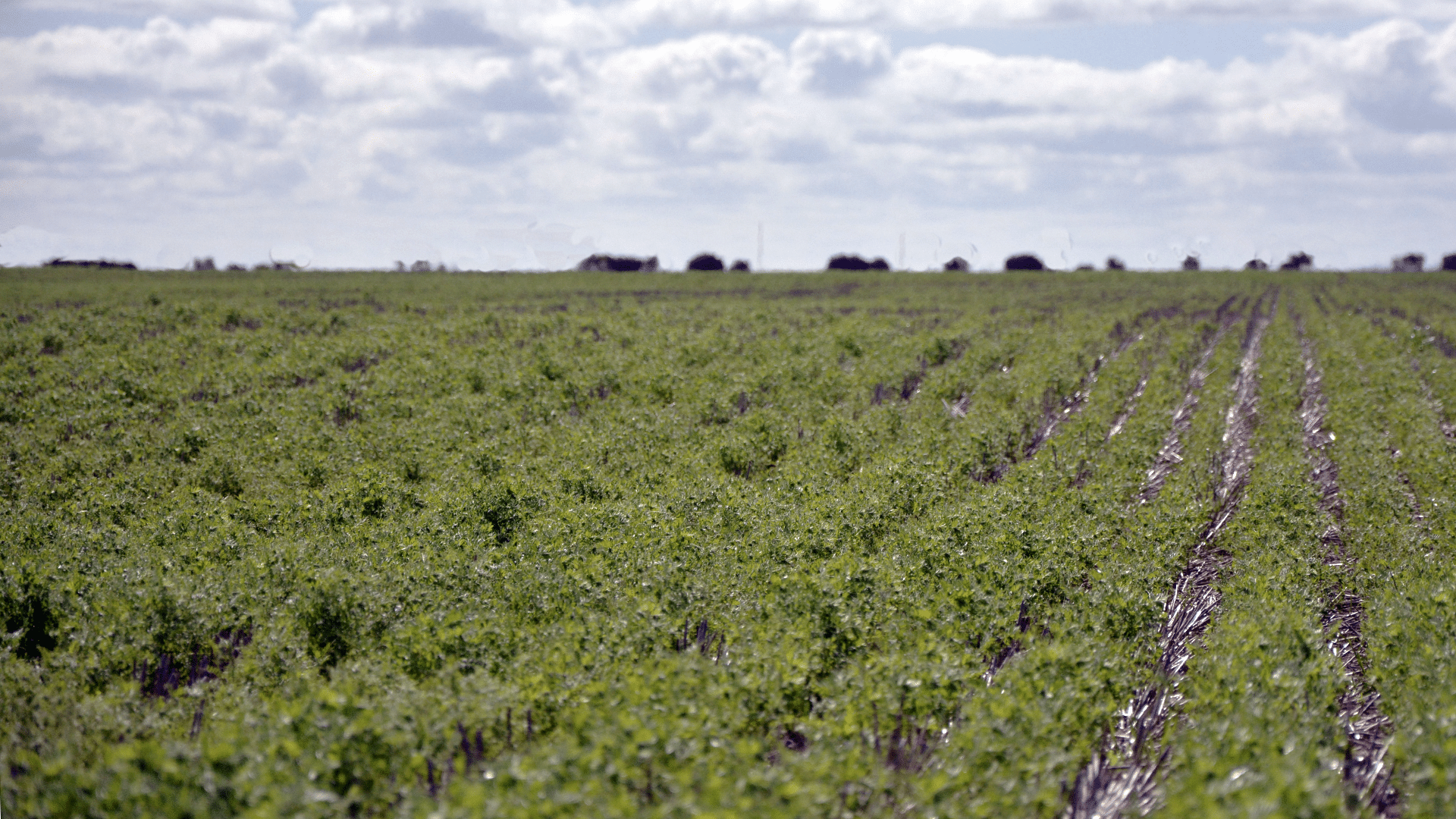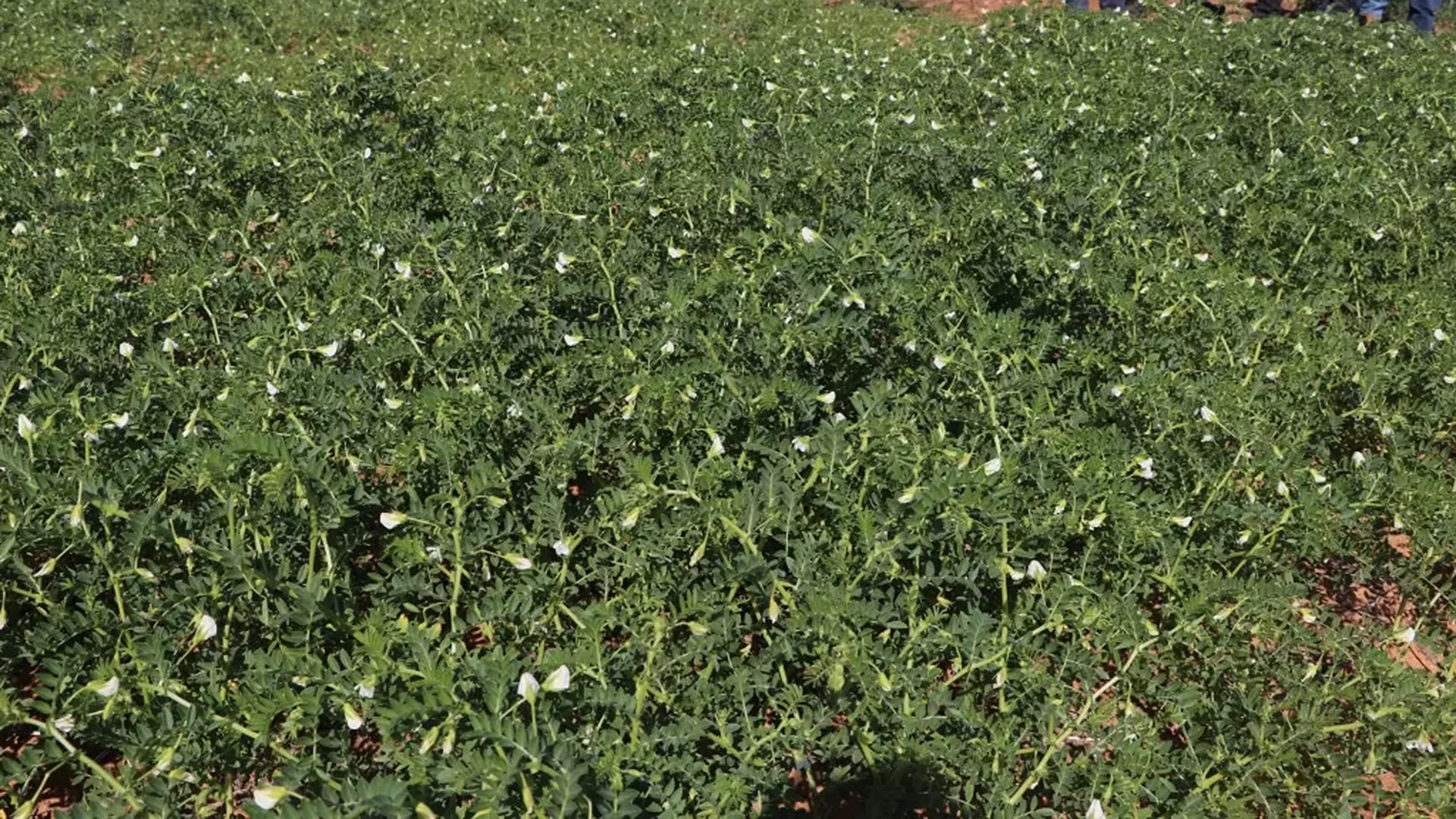START
FINISH

Summary
Soil-applied imidazolinone (imi) herbicides are an important herbicide for multiple crop types. They should persist long enough to provide effective weed control during crop growth but not so long that residues affect subsequent crops.
Imidazolinone herbicides are known to persist longer than is optimal in low rainfall, alkaline soils of the SA Mallee. This persistence may affect key soil microbes and impact the productivity of subsequent broadleaf crops.
This project identified that Intervix can persist in Mallee soils for more than two years and impact the abundance of key rhizobacteria, which may have flow-on impacts to crop performance.
Background
Mallee environments dominate the low rainfall farming zone of south-eastern Australia, and numerous soil constraints restrict crop productivity. Long-lasting imidazolinone herbicides are increasingly being applied to control weeds through the growing season. Unwanted herbicide persistence affects subsequent broadleaf crops, but the impact on key soil microbes is unknown.
Under optimum conditions, imidazolinone is primarily broken down by microbial action over one or two months. However, in moisture-limited Mallee environments, this degradation is greatly reduced, particularly where soils are alkaline and low in organic carbon.
Research Aims
The core objectives of the project were to:
- Evaluate the impact of imidazolinone residues on key microbial populations of alkaline soils in SA Mallee environments, with a focus on the predominant plant growth-promoting bacteria rhizobia, Bacillus, Streptomyces and Pseudomonas.
- Determine the implications of herbicide residues on broadleaf crops and pasture species, with a particular focus on legume crops.
In The Field
Two replicated field trials were established at Waikerie (northern Mallee) and Peebinga (southern Mallee). On 26 July 2018, imidazolinone concentrations were sprayed onto plots sown to Scope barley. This allowed 10 months for the treatments to settle and move into the soil profile.
Six herbicide residues levels were simulated – 0x, 0.001x, 0.01x, 0.1x, 0.5x, 1x, where x is the recommended field rate of 500ml/ha Intervix.
Intervix is comprised of Imazamox (33g/L) and Imazapyr (15g/L) as its active ingredients. To determine the impact of imazamox and imazapyr soil residues on lentil and wheat rhizosphere bacteria, and the richness and abundance of soil bacteria, the herbicides Raptor (imazamox) and Warrant (imazapyr) were used at rates equivalent to the original proportions in Intervix.
Prior to sowing in 2019, 0-10cm soil cores were sampled from each plot to determine the amount of herbicide still present. Trials were then sown to wheat and lentils on 21 May 2019. Pot experiments were also conducted under glasshouse conditions.
Both the field and pot trials compared imi-tolerant Kord CL wheat with the susceptible variety Gladius. Lentil trials compared residue tolerant Hurricane XT with susceptible Nipper. Each experiment had two times of sampling for crop growth and soil microbiology.
Results
Kord CL wheat and Hurricane XT lentils were tolerant to Intervix residues, however, Gladius and Nipper were sensitive to residues above 10 per cent of the recommended field rate.
Rhizosphere soil bacterial communities associated with Gladius were altered by the presence of high Intervix residues at growth stage 31. However, variety, residue rate and time of sampling all influenced the composition of the bacterial community.
The mean relative abundance of organisms of economic significance like Bacillus and Rhizobium was reduced at the high residue rate for both Gladius and Kord CL at both times of sampling.
In the lentil rhizosphere, bacterial species abundance and richness was lower in high residue treatments during the early vegetative stage. However, Nipper was more sensitive to Intervix residues at GS V1 than Hurricane XT compared with the untreated control.
The lentil rhizosphere harboured less Bacillus and Streptomyces than the bulk soil and the mean relative abundance of Bacillus was reduced at high residue rates, while the abundance of Streptomyces increased with Intervix residues.
Imazapyr residues significantly reduced bacterial abundance and richness in the lentil rhizosphere at both times of sampling. However, the relative abundance of Rhizobium was not affected by the presence of imazamox or imazapyr residues at the recommended field rate.
Project Participants
University of Adelaide: Associate Professor Matthew Denton, Dr Yi Zhou, Dr Thang Viet Lai
SA Department of Primary Industries and Regions’ South Australian Research and Development Institute (PIRSA-SARDI):
Brian Dzoma, Dr Nigel Wilhelm, Kym Zeppel
The Problem
Imidazolinone herbicides are increasingly applied for weed control but persistence in the soil may impact crops and key soil microbes.
The research
This project evaluated the impact of imidazolinone herbicides on soil microbial populations of alkaline soils in SA Mallee environments.
More information
Associate Professor Matthew Denton
T: 08 8313 1098
Brian Dzoma
T: 0455 071 032
Value for Growers
Maximising production is crucial in the low rainfall conditions and poor performing alkaline sands of Mallee environments. Where imidazolinone herbicide residues persist in the soil, planting herbicide tolerant varieties and rhizobial inoculation are likely to have beneficial effects on the nodulation, grain yield, and protein content of crops like lentils and peas.
Awareness of the risk of imidazolinone persistence, especially when summer and autumn seasons are drier than normal, can allow growers to adjust their rotations so that herbicide residues have time to break down before sensitive crops are planted,



